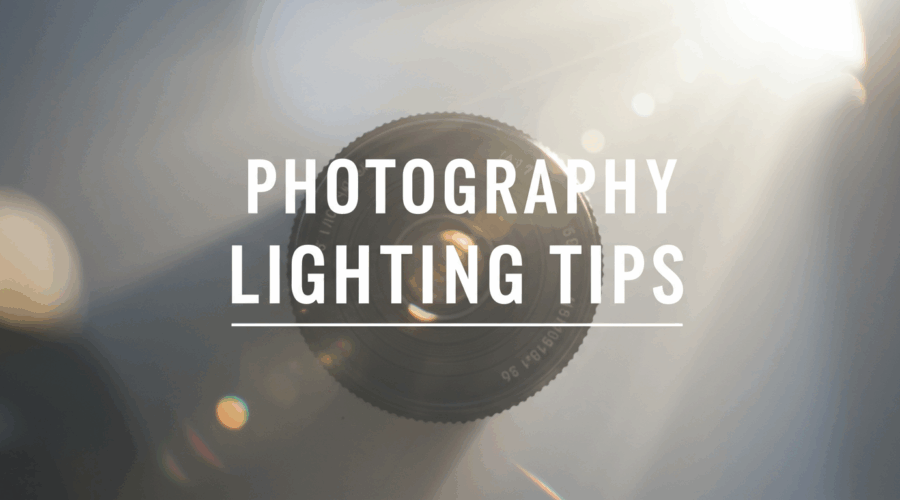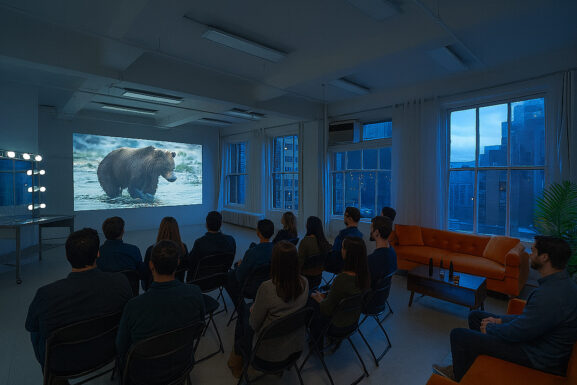25 Essential Photography Tips for Beginners in 2025
Starting your photography journey in 2025 can feel overwhelming, especially with new cameras, editing tools, and evolving trends. Whether you’re shooting portraits, fashion, products, or just capturing personal moments, the fundamentals remain the same. At Love Studios NYC, we support photographers by providing fully equipped photo studios, lighting rentals, and daylight-filled creative spaces. This guide covers 25 essential photography tips for beginners, offering practical knowledge to help you grow and improve.
Why These Tips Matter
Photography is a mix of technical skill and creative vision. Learning the basics early gives you control over your images and prepares you for real-world shoots. Whether you’re renting a professional studio like those at Love Studios NYC or shooting outdoors, knowing how to manage your camera, light, and composition leads to better results. This guide helps new photographers avoid common mistakes and make confident choices, supported by proven techniques and industry know-how.
These tips are drawn from professional experiences and align with the needs of commercial photographers, content creators, and beginners alike. Mastering these basics will save you time and effort while helping you build a solid foundation to create polished, high-quality work.
1. Master Composition Basics
Composition affects how a viewer experiences your photo. A well-composed image directs attention, tells a story, and creates visual balance. Start with the rule of thirds, dividing your frame into 9 equal parts using two vertical and two horizontal lines. Place your subject along these lines or intersections to improve balance.
Also explore leading lines, framing, and negative space. These techniques help highlight your subject without overwhelming the viewer. In commercial settings, such as fashion or product shoots at Love Studios NYC, composition helps frame a model or item clearly for marketing use.
Consistent composition habits create cleaner portfolios and make your work more appealing to clients, agencies, or brands. It’s not about following rules, it’s about using tools that enhance storytelling in every shot.
2. Use What You Have
Many beginners believe they need expensive gear to take great photos. That’s not true. The best camera is the one you already have, whether it’s a smartphone, an entry-level DSLR, or a mirrorless camera. Focus on understanding how your current gear works: learn its strengths, limitations, and optimal settings.
Today’s smartphones offer portrait modes, manual controls, and even RAW shooting, making them capable tools for practice and learning. At Love Studios NYC, we see professional work done on everything from Canon R5s to iPhones, especially in well-lit studios.
Don’t wait to upgrade before starting. Master your current equipment first, then decide what you need for your goals. This mindset keeps your focus on skill rather than spending.
3. Understand Key Settings
Learning camera settings is essential. The exposure triangle, aperture, shutter speed, and ISO, controls how bright or dark your photo is. Aperture affects depth of field, shutter speed controls motion blur, and ISO adjusts sensitivity to light.
| Setting | Effect | Common Uses |
| Aperture (f-stop) | Background blur (bokeh) | Portraits (e.g., f/1.8) |
| Shutter Speed | Freeze or blur motion | Sports (fast), Light trails (slow) |
| ISO | Brightness & noise level | Low light (higher ISO) |
Understanding these helps you adapt to any situation, studio portraits, outdoor daylight, or fast-moving action. At Love Studios NYC, we recommend practicing with manual mode so you gain full control and confidence when shooting client work.
4. Protect Your Highlights
Blown-out highlights (pure white areas with no detail) can’t be recovered in editing. To avoid this, use your camera’s histogram and highlight warnings (blinkies). Adjust exposure to preserve highlight details, especially when shooting bright backgrounds or clothing.
In product photography or fashion shoots, like those done at Love Studios NYC, keeping details in bright areas is critical for retouching and commercial use. Slight underexposure is often safer than risking overexposed highlights.
When possible, shoot in RAW format. This retains more detail and gives more flexibility in post-processing. A well-exposed photo saves editing time and ensures professional-quality results.
5. Read the Light
Light is everything in photography. Learning how to recognize and use light improves your images more than any gear upgrade. Notice how shadows fall, how soft or harsh the light is, and the direction it comes from.
Golden hour (just after sunrise or before sunset) gives soft, warm tones ideal for portraits. Midday sun can be harsh; try using diffusers, reflectors, or shaded areas.
In our daylight-filled studios at Love Studios NYC, large south-facing windows offer controlled natural light all day. For artificial light, understand the difference between continuous and strobe lighting, and use modifiers like softboxes to shape your light.
6. Slow Down for Quality
New photographers often rush. Take your time to think before pressing the shutter. Look at your composition. Double-check your settings. Notice distracting elements in the background.
Deliberate shooting leads to higher quality work, fewer mistakes, and stronger storytelling. This is especially important in paid or time-limited sessions like brand shoots, model tests, or editorial setups common at Love Studios NYC.
Train yourself to shoot with intention, not speed. Quality always beats quantity.
7. Change Your Perspective
Great images often come from unexpected angles. Don’t just shoot from eye level. Try kneeling, shooting from above, or framing your subject through objects.
Changing perspective adds interest and separates your work from generic photos. For example, shooting from a low angle can make a model look more powerful, a trick often used in fashion photography done in our Studio C or Studio 22B at Love Studios NYC.
Train yourself to move physically before adjusting your zoom. This helps improve framing and storytelling.
8. Tripod Use Basics
Tripods provide stability and consistency. They’re essential for long exposures, low-light situations, HDR photos, and product photography.
Use a tripod when sharpness and framing accuracy matter. At Love Studios NYC, clients often use tripods for beauty shots and stop-motion setups.
Invest in a sturdy model with adjustable height and a ball head. Avoid cheap, shaky tripods that can cause blur or damage your camera.
9. Check Your Edges
Before pressing the shutter, check the entire frame, especially the corners and edges. Look for distractions: trash, cropped limbs, poles behind heads, or unwanted reflections.
A clean frame keeps attention on your subject. Clients often judge photos on small details, especially in commercial and editorial work. At Love Studios NYC, mirrors, props, and large backdrops help photographers manage their backgrounds and composition more easily.
Train your eye to scan the full viewfinder before every shot. This simple habit can make your work look more professional instantly.
10. Balance Flash & Ambient Light
Using flash can improve your photos dramatically, if used correctly. The key is balancing it with ambient (natural or existing) light. Fill flash helps reduce shadows on faces during daylight or in backlit scenes. It’s also useful indoors when natural light is weak.
Many beginner photographers make flash too dominant, creating harsh shadows or overexposed highlights. Instead, adjust flash power and use diffusers or bounce flash techniques to soften the effect.
At Love Studios NYC, our strobe-equipped studios give you full control over flash output. We also recommend using manual flash mode to learn balance gradually. Start by metering for ambient light and adding flash to lift shadows, not overpower the scene.
Proper flash use makes your photos look more natural while maintaining detail and texture, important in beauty and product work.
11. Keep Your Lens Spotless
A dirty lens ruins sharpness and introduces unwanted flares or ghosting. Smudges, dust, or water spots affect image quality and require extra post-processing.
Always carry a microfiber cloth, lens cleaning fluid, and a blower. Never wipe your lens with clothing, tissues, or paper; these can scratch the coating.
Clean your lens before every shoot, especially under bright lights where dust is more visible. At Love Studios NYC, we see beginners struggle with soft, hazy images caused by fingerprints or grime, easily avoided with basic cleaning habits.
Clean gear shows professionalism and ensures your results are crisp and clear, essential in commercial work.
12. Skip Cheap Filters
Inexpensive filters can degrade your image quality, reducing sharpness and introducing color casts or reflections. For beginners, it’s tempting to save money on UV or ND filters, but poor-quality glass cancels out even the best lens performance.
Use filters from trusted brands like B+W, Hoya, or Tiffen. For ND filters, check for even darkening and neutral color balance.
At Love Studios NYC, we often assist photographers using natural light or strobes with ND filters to control exposure during wide-aperture shooting. Using the right filter allows for flexibility without sacrificing quality.
Buy fewer, better filters instead of multiple poor ones. It’s an investment that protects your lens and keeps your shots sharp.
13. Start Basic Editing
Editing enhances your photos, but it should complement, not fix, your original image. Start with basics: cropping, white balance, contrast, and sharpening. Tools like Adobe Lightroom, Capture One, or even mobile apps offer these functions.
Use editing to correct exposure or color, but avoid over-processing with extreme saturation or heavy filters. Focus on creating a natural, balanced look.
At Love Studios NYC, many clients deliver unedited and retouched versions to agencies. Learn basic post-processing so you can deliver consistent results that look polished even before advanced retouching.
A solid editing foundation helps define your style and improves your final output.
14. Backup Your Work Often
Data loss can be devastating. Always back up your photos in two locations: an external hard drive and a cloud service (Google Drive, Dropbox, Backblaze).
Create a consistent file-naming system and back up immediately after every shoot. Use automation tools if possible.
At Love Studios NYC, we advise our photographers to offload files immediately after studio sessions. This minimizes the risk of card corruption or accidental deletion.
Professional workflows depend on reliable backups. Make this a habit from day one.
15. Structure Your Library
An organized photo library saves hours of searching and editing time. Use folders by date, client, or project, and apply tags or keywords in your software.
Use color labels, flags, and star ratings to sort selects, rejects, and keepers. Lightroom and Capture One make this easy.
For high-volume shooting, like fashion lookbooks or content days at Love Studios NYC, organization is essential. A disorganized library leads to delays and missed opportunities.
Good file management is a productivity booster and shows professionalism.
16. Push Your Limits
Routine can stall growth. Try new styles, subjects, or techniques. If you always shoot portraits, try street photography or landscapes. Experiment with black & white, low light, or new gear.
Pushing limits expands your skills and helps you discover new interests. Consider starting personal projects or participating in challenges.
Many photographers at Love Studios NYC use our studios for creative test shoots between client jobs; this is where real growth happens.
The more you explore, the faster you improve.
17. See What’s There
A good photographer works with what’s available. Instead of trying to force a scene into your vision, adapt and highlight its strengths.
In environmental portraits, let the background tell part of the story, use architectural elements, textures, or light as part of your composition.
At Love Studios NYC, we encourage photographers to explore different rooms, windows, and backdrops creatively. Let the location guide your decisions.
18. Join Photography Communities
Learning accelerates when you connect with others. Join online forums, Facebook groups, or local photography meetups. Feedback, challenges, and shared learning fuel your progress.
Ask for critique, offer advice, and collaborate on creative projects. At Love Studios NYC, we regularly host creatives who meet through local groups or Instagram connections.
Being part of a photography community keeps you motivated, accountable, and exposed to new ideas.
19. Target Personal Weaknesses
Improvement begins with honest self-assessment. Look through your recent work and identify weak points, whether it’s poor lighting, bad cropping, or weak color grading.
Create a learning plan around those issues. Watch tutorials, practice specific shots, and compare your progress weekly.
We recommend creating “before and after” folders to track your improvement over time. Many Love Studios NYC clients share transformation stories based on this focused practice.
Fixing weak areas makes your portfolio stronger and your work more consistent.
20. Re‑visit Old Images
Go back to your old photos and re-edit them with your current skills. Often, you’ll find hidden gems or learn how far you’ve come.
This practice also helps build a consistent look across your portfolio, something important for commercial and agency work.
Keep backups of RAW files so you can re-edit anytime. Many photographers at Love Studios NYC improve their portfolios by updating previous work with new techniques.
It’s a free way to improve your visual storytelling.
21. Be Selective with Your Shots
Don’t post or deliver everything. Quality matters more than quantity. Select only the strongest images from each shoot to share or add to your portfolio.
This helps you tell a clear, focused story and builds a stronger personal brand. At Love Studios NYC, our clients often narrow down from 300 images to just 10–15 final selects for submission.
Curation shows confidence and professionalism. Think like an editor, not just a photographer.
22. Shoot Regularly & Experiment
Practice consistently to develop skills. Try the 365 photography challenge (one photo a day) or set weekly themes like shadows, color, or reflections.
This kind of repetition improves muscle memory, speeds up decision-making, and sharpens your eye. Use each session to test something new, like light placement or composition tricks.
Our frequent guests at Love Studios NYC often use weekday downtime to test lighting setups or creative ideas. Small, regular sessions lead to big gains.
23. Hunt Beautiful Light
Great light transforms ordinary scenes. Train your eye to notice light direction, softness, and color. Look for a golden hour outdoors or window light indoors.
Use reflectors, white walls, or bounce cards to shape light even without fancy equipment. At Love Studios NYC, our daylight studios are designed for natural light control with options for artificial fill when needed.
Good light does more than illuminate; it creates mood and depth. Make it your top priority.
24. Limit Social Scrolling
Spending hours comparing your work to others kills creativity. Instead, focus on shooting, learning, and experimenting. Limit scrolling and start doing.
Use social platforms to share work, connect, or get inspired, but avoid the trap of comparing your journey to someone else’s highlight reel.
At Love Studios NYC, we’ve seen the most growth in photographers who stay offline during shoots and focus fully on their craft.
25. Enjoy the Process
Photography should be enjoyable. Don’t stress about perfection or numbers. Enjoy the process of learning, improving, and creating.
Celebrate small wins, like getting your first sharp portrait or editing your first RAW file. Take breaks when needed but stay consistent.
Photography is a lifelong skill, not a quick fix. Clients who shoot at Love Studios NYC often say their best work came when they were having fun, not chasing likes.
Frequently Asked Questions (FAQs)
What is the best beginner camera?
The Canon EOS R50, Nikon Z50, and Sony ZV-E10 are great entry-level mirrorless options. Smartphones like iPhone 15 Pro also offer high-quality results for beginners.
How do I use natural light without gear?
Use window light with sheer curtains, bounce light off white walls, and shoot during golden hour. Position subjects facing light sources for soft, even illumination.
How often should I edit my photos?
Edit after every shoot. Start with basic corrections (exposure, color) and move to retouching only when needed. Keep RAW files to allow re-editing later as your skills improve.



